Bridge Hunting – CNR Bow River
Built just over a century ago, the massive bridge seen in this report carries the CNR tracks over the Bow River in Calgary, just east of downtown. Unlike it’s nearby neighbour, the CPR Bonnybrook Bridge, this structure did not sustain damage during the disastrous spring floods of 2013. I guess this speaks volumes of those who designed and built it.
The bridge was constructed in 1911 for the Grand Truck Pacific (GTP). That company was formed in the early 1900s and was one of three transcontinental railway networks within Canada. Always financially on shaky ground, it merged with a rival, the Canadian Northern Railway (CNoR) in the early 1920s. The resultant company became the CNR that we know today.
One hallmark of the GTP was their high standards of engineering. This bridge was clearly overbuilt. It stood fast during last year’s catastrophic floods while the nearby CPR Bonnybrook Bridge partially collapsed due to the rushing waters.
Today the bridge sees few trains. The CNR uses it to access an interchange track with the CPR and to reach a railcar repair facility. The track ends perhaps a kilometre from the bridge. In times past, the rails went further, ending at a yard and station just east of the city core. Passenger trains used the bridge until the 1920s, when operations were consolidated at the former CNoR station north of downtown. The GTP station and yard we just mentioned, BTW, were located on the old Fort Calgary grounds. This was the birthplace of the city. Today, it’s a heritage site and a reproduction fort has been built there. Things have come full circle.
This bridge is a modified Pratt design called a Parker Truss, technically a Parker Through Truss. This form uses upper chords which are made up from of a series of straight sections angled in a polygonal arrangement, producing an approximate curve. Some call it a Camelback or Parker Camelback Truss but that’s in error. A true Camelback is a subset of the Parker design but has exactly five upper chord segments (two straight, two slightly angled, two angled further). This bridge has only three upper chord elements as you can see. The two subsets are similar though so I won’t sweat it much.
The advantages of the Parker Truss over the traditional straight Pratt design is that they can be made to handle longer spans. This helped here and the bridge was able to cross the entire river using only two segments and one intermediate pier. Had they gone with a traditional Pratt style, they would have needed at least three or four segments and many intermediate piers. The Parker uses less steel but is a bit more complicated to build. Of all the variants, the straight Pratt is the most common. Many railway bridges built in the first couple decades of the twentieth century were made to a Pratt design. So were many road bridges.
I looked high and low but could not find a builder’s plate on the bridge – I checked both sides (there is public access on each end). Often the bridge maker will mark their work. Either the plate was never applied, or it’s since gone missing, or it’s also possible I missed it.
The extra sets of railway tracks seen on the bridge, between the main running rails, are called check or guard rails. These simply keep a derailed car, heaven forbid it should happen, upright and in line with the track so it does not damage the structure. All train bridges will have these, as will tunnels.
Nearby is a second modest size trestle-style bridge spanning an irrigation canal. It’s like a million other train bridges made in this form.
Access to the CNR Bow River bridge is via a public pathway and park. This makes photographing the structure safe and easy. One can also see the nearby CPR bridge. The pathway also parallels the CPR’s mainline and if you are into train spotting, it can be a good place to catch the action. A pesky chain link fence makes photographing the trains a bit of a challenge though. The far end of the bridge can also be viewed from a second pathway on that side of the river.
This bridge appears briefly in the 1976 train themed move Silver Streak. In the scene, the out of control runaway train is seen speeding across the structure.
To read about more bridges we’ve explored, follow these links…
Bridge hunting – CNR Ogden.
Bridge hunting – Bullpound Alberta.
Bridge hunting – Carmangay Alberta.
To read about the nearby CPR bridge that collapsed during the spring 2013 floods, go here…
Collapsed Bonnybrook train bridge.
If you wish more information on what you’ve seen here, by all means contact us!
Date of adventure: August, 2014.
Location: Calgary, AB.
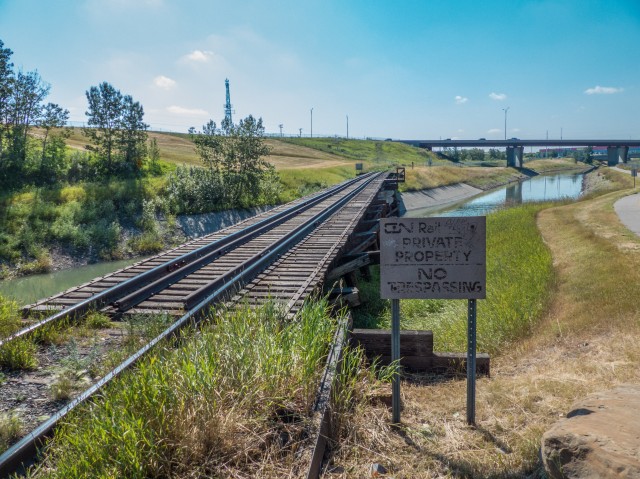
Nearby is a wood trestle spanning an irrigation canal.
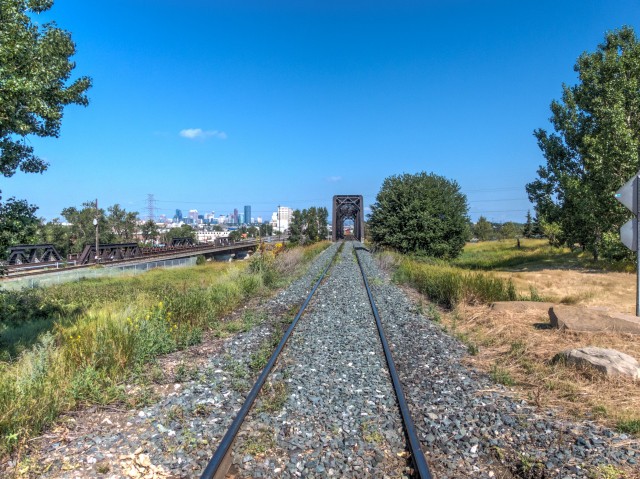
Looking down the tracks (from a public pathway) at the CNR’s Bow River bridge.
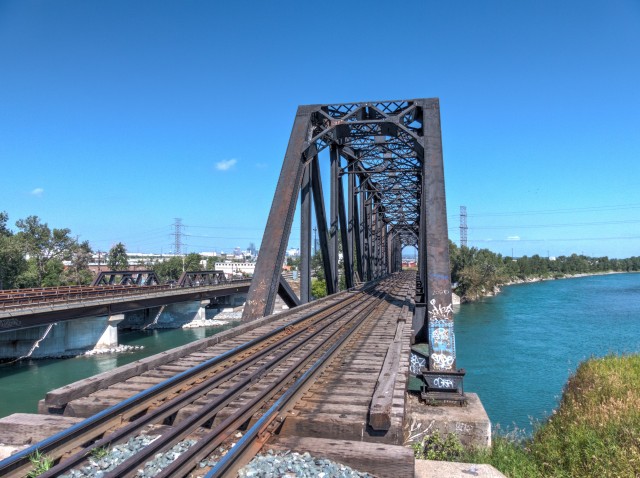
This massive structure dates from 1911.
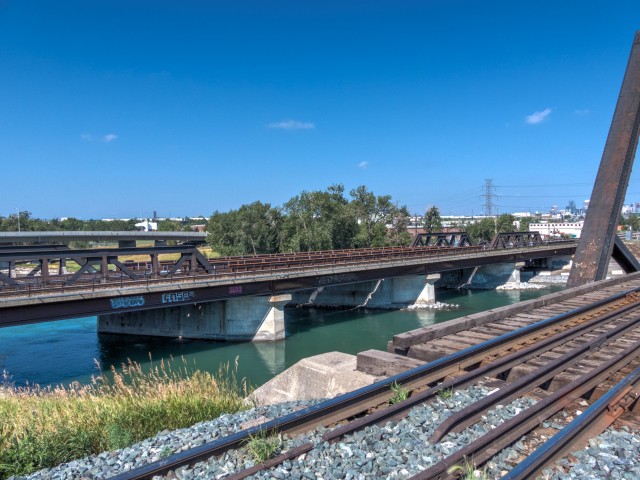
Just downstream is the CPR’s Bonnybrook Bridge.
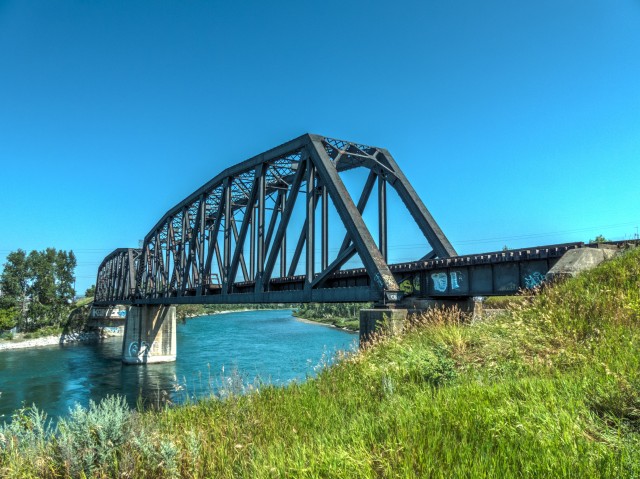
The structure was built for the Grand Trunk Pacific Railway.
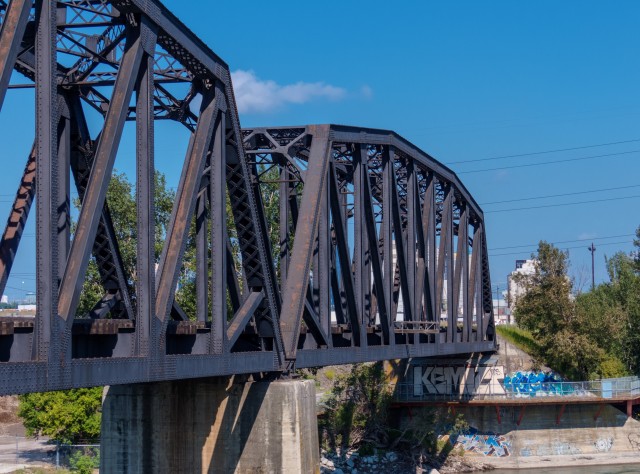
It’s used to access an interchange yard and rail car repair facility.

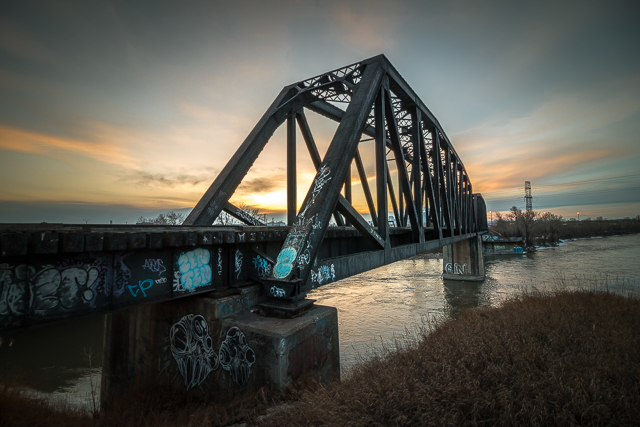
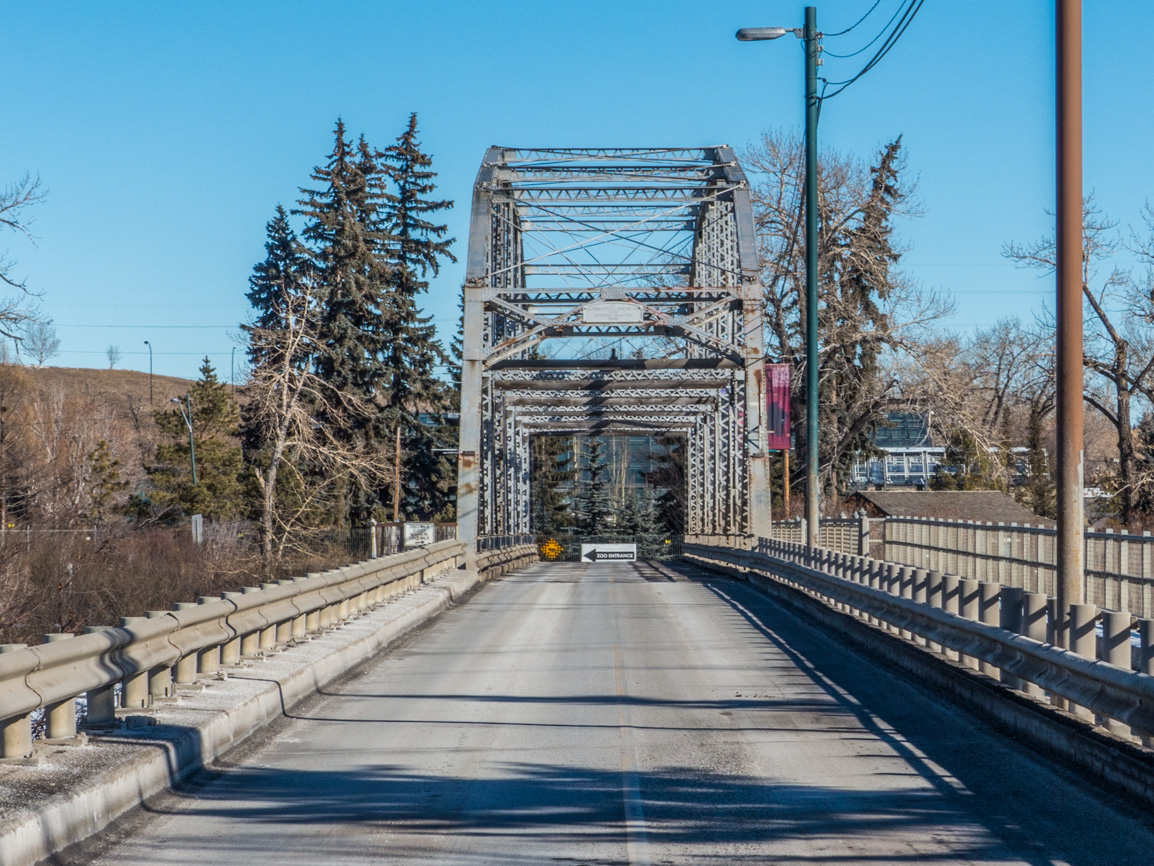
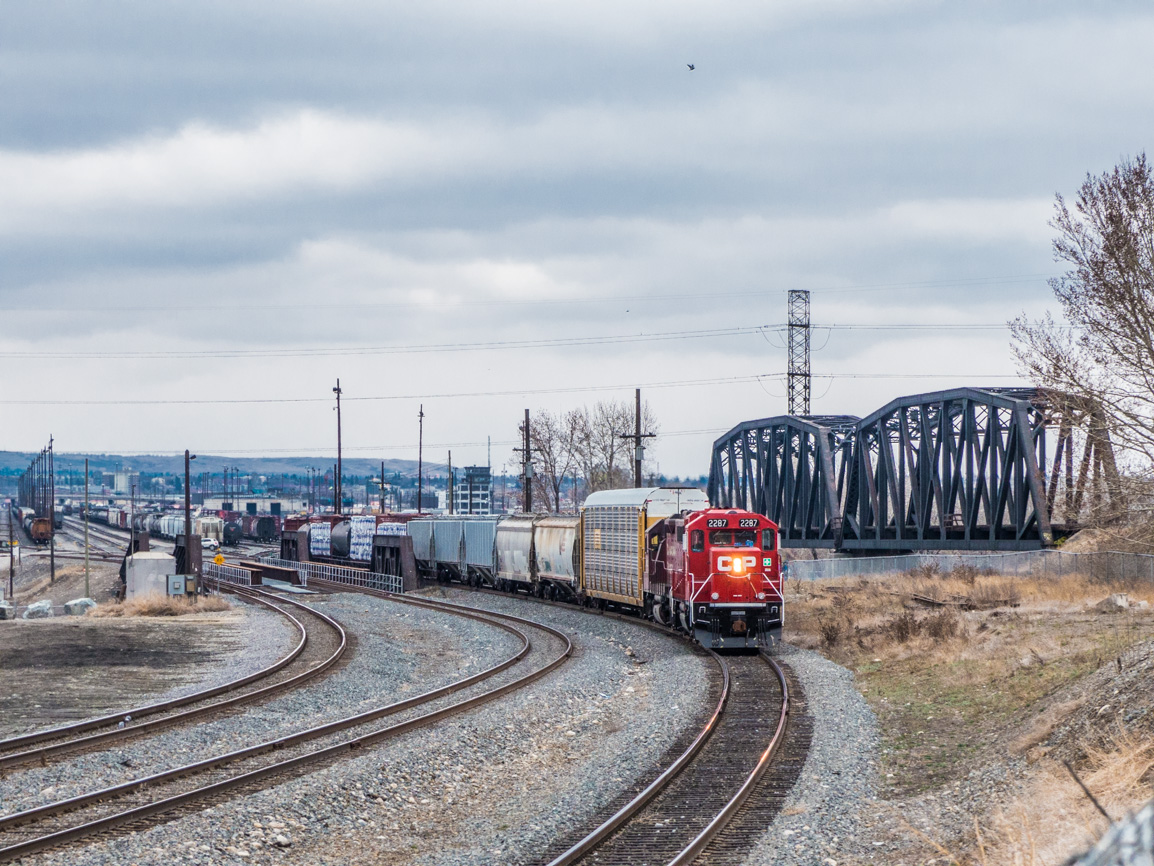
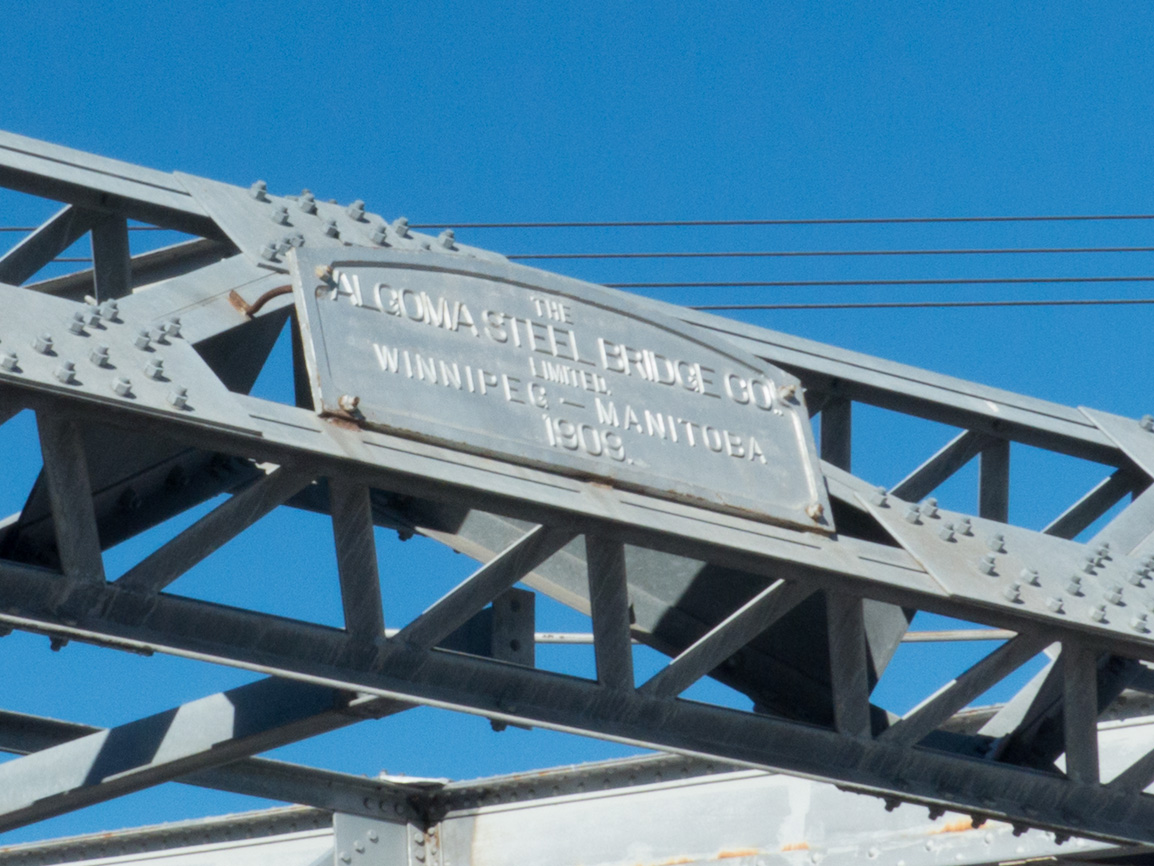
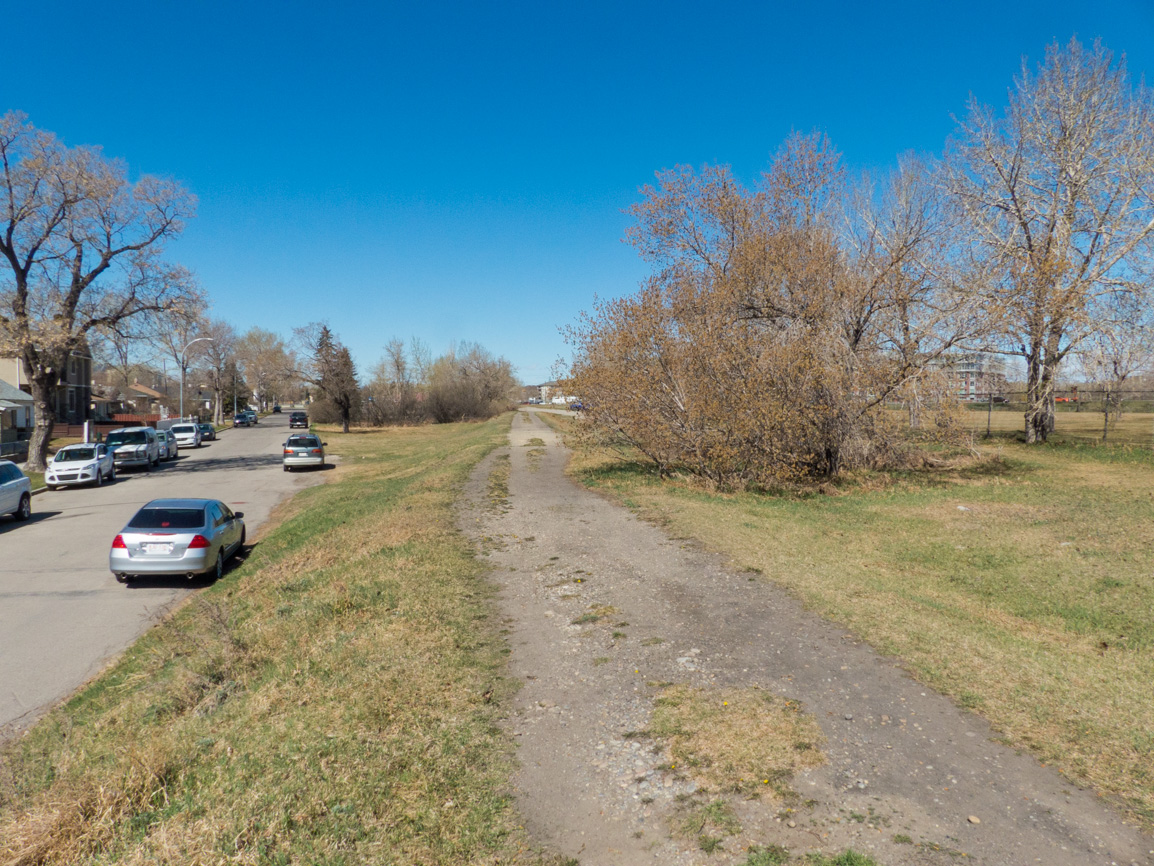
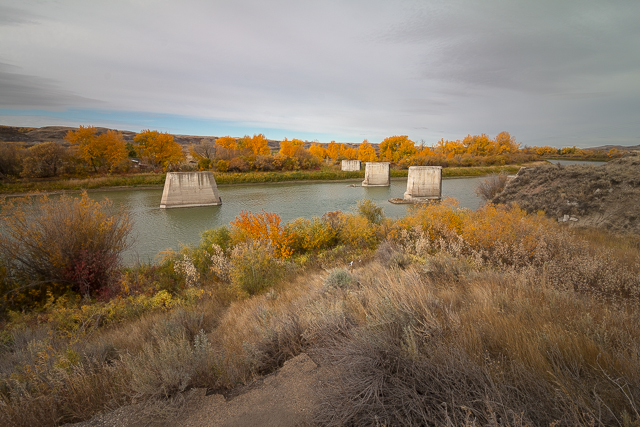
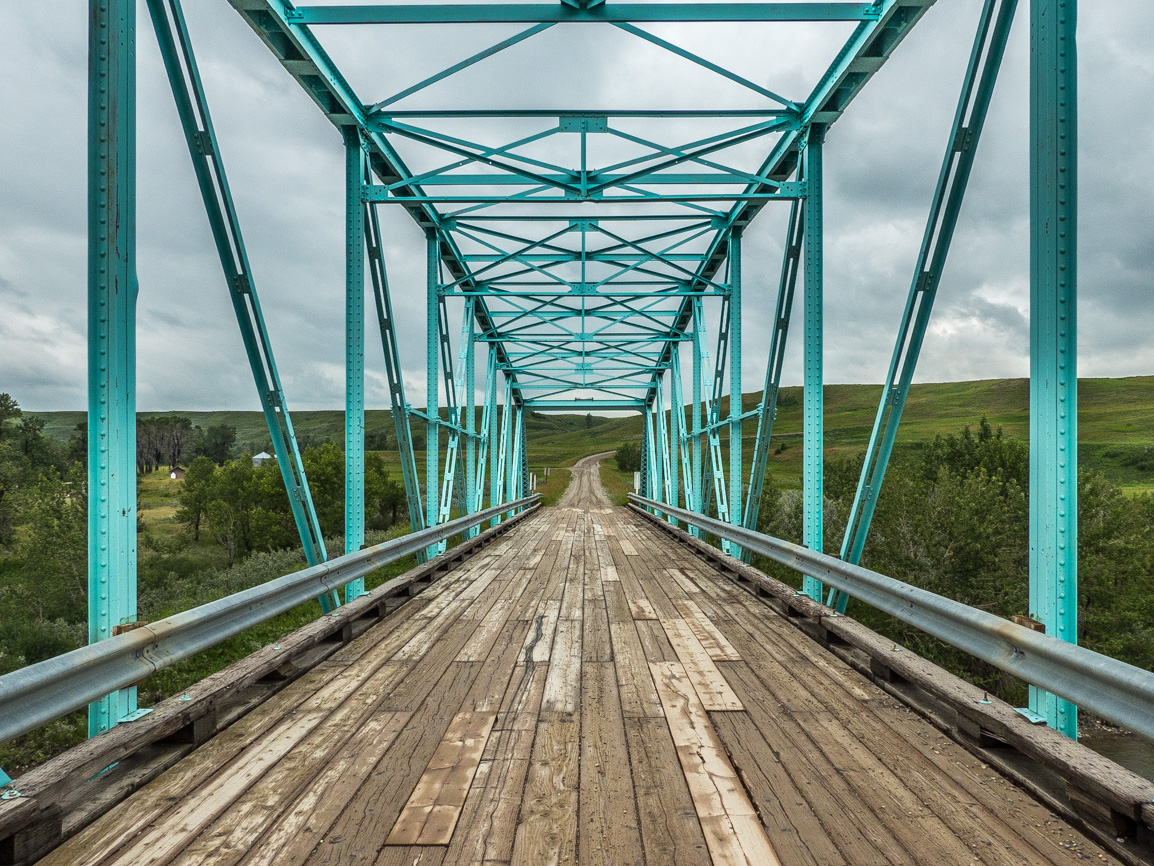
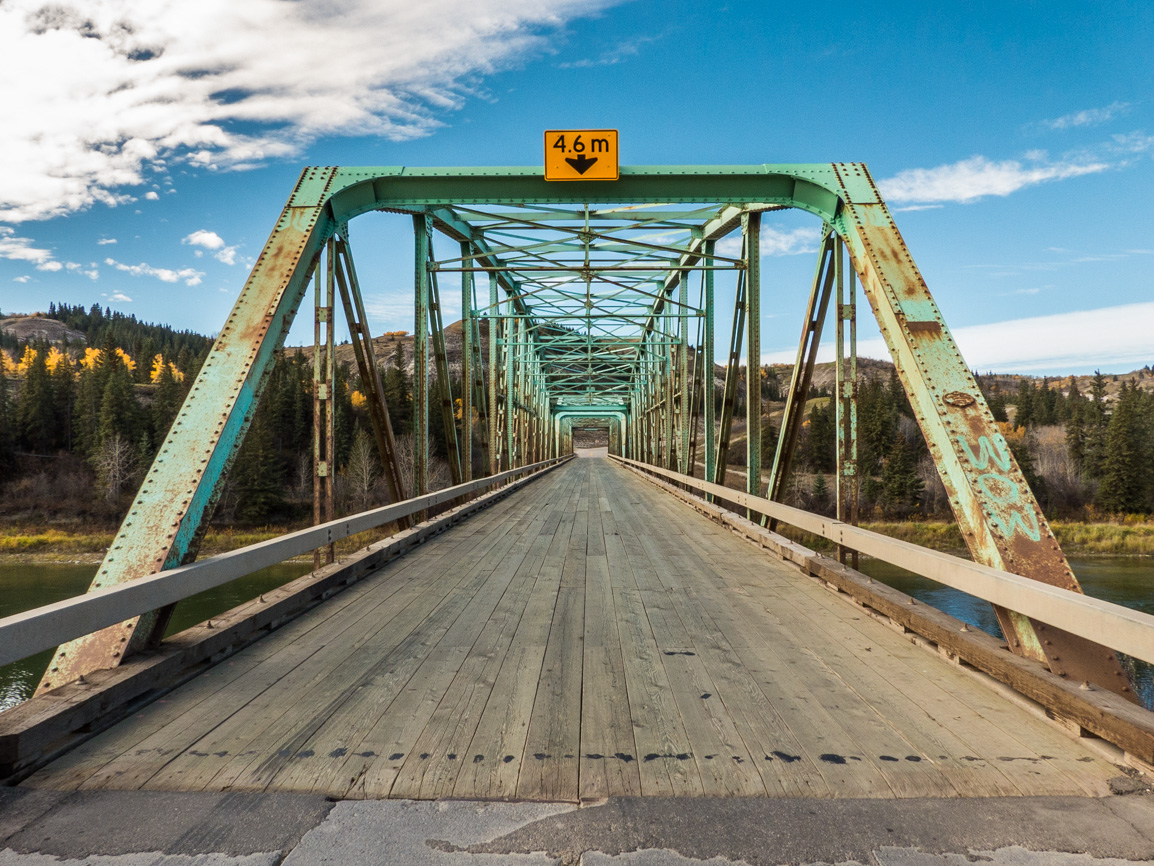
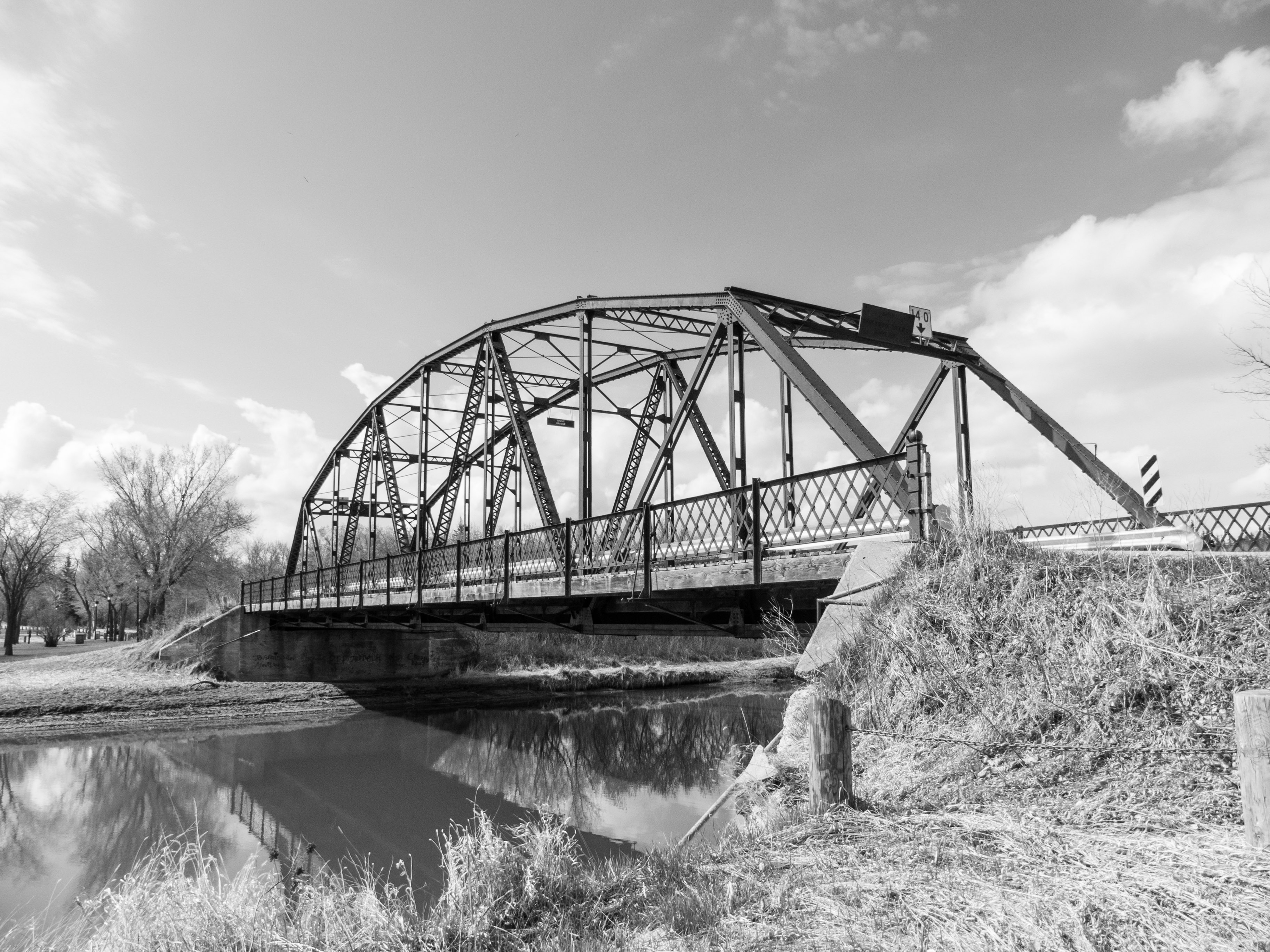
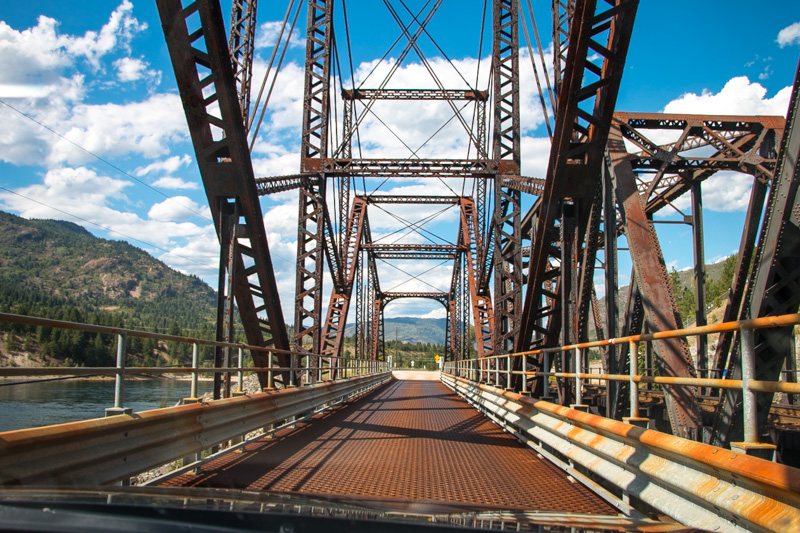
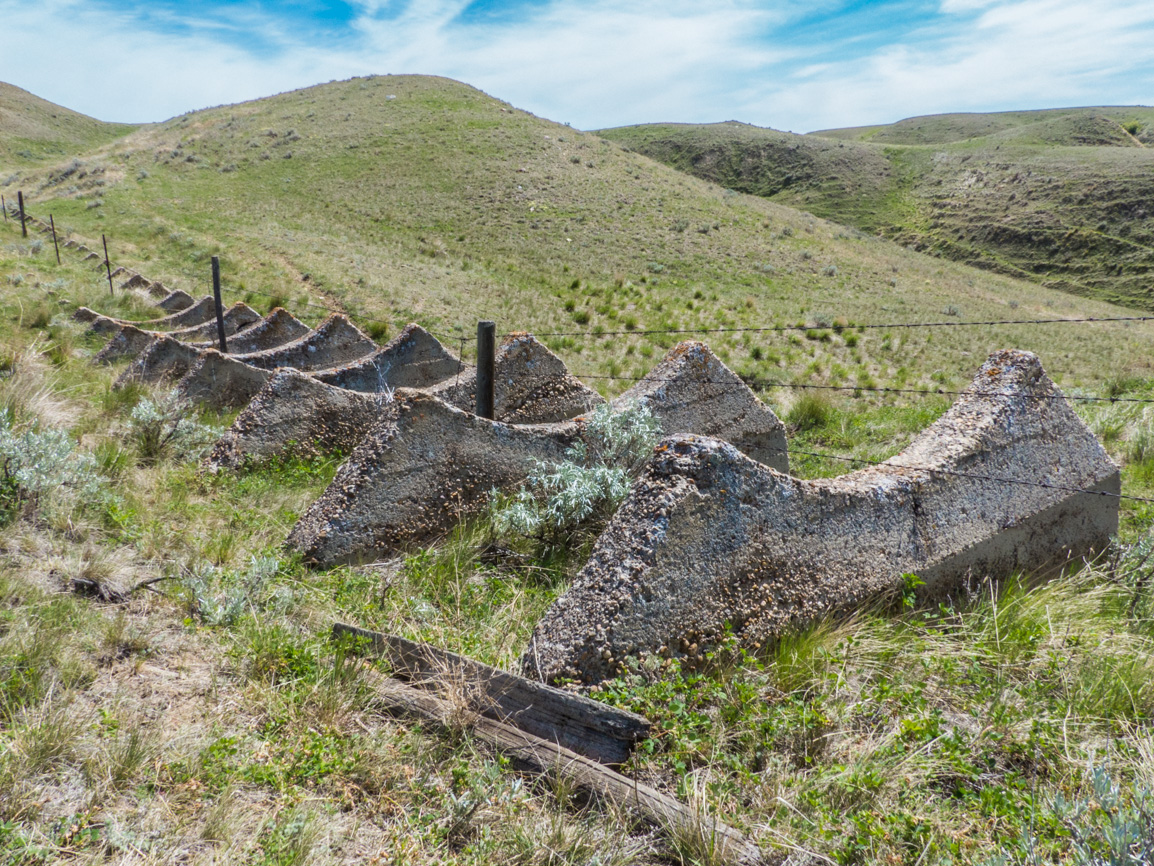
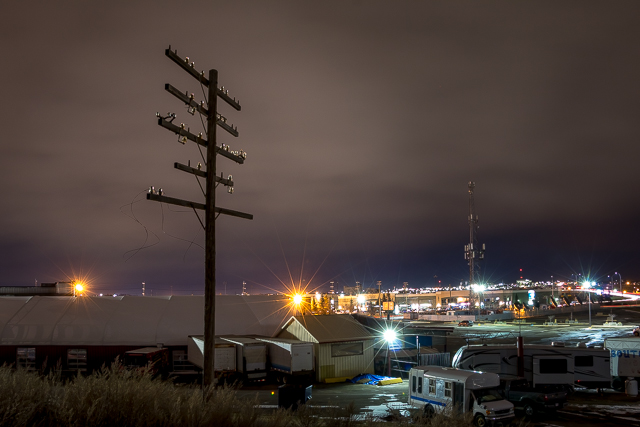
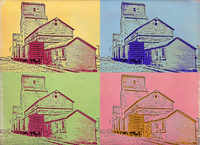






Great shots. Nice sky.
Legendary Alberta blue skies…